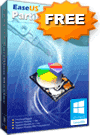January 24th, 2009
Posted by Richard Koman
Could the federal government be going open source? The BBC reports that President Obama has asked former Sun CEO Scott McNealy to report on the relative benefits of open source software. Imagine that: a president who has heard of open source software.
And McNealy will report just how large those benefits are.
It’s intuitively obvious open source is more cost effective and productive than proprietary software. Open source does not require you to pay a penny to Microsoft or IBM or Oracle or any proprietary vendor any money.
And he wants open source mandates.
The government ought to mandate open source products based on open source reference implementations to improve security, get higher quality software, lower costs, higher reliability – all the benefits that come with open software.
Coming from McNealy, the opinion is hardly a neutral analysis. Sun is a vigorous proposal of open source and Unix; cofounder Bill Joy was a primary author of BSD. During his tenure as CEO, McNealy’s hallmark was his constant attacks on Microsoft and Bill Gates.
In his inaugural speech, Obama said:
those of us who manage the public’s dollars will be held to account, to spend wisely, reform bad habits, and do our business in the light of day, because only then can we restore the vital trust between a people and their government.
The question is how much longer spending huge amounts of taxpayer money on proprietary solutions can be justified as “spending wisely” or something other than a “bad habit.”
Michael Tiemann, VP of RedHat and head of the Open Source Initiative, estimated the global waste in using proprietary software at more than $1 trillion annually.
This is the kind of change we need if we are ever going to see the government reform its operational capabilities and cost basis. If they fail to do this, it’s one more stick in the mud. The capital markets are telling us today we can no longer afford much more status quo.
At TruthOut, Dean Baker has called for a $2 billion investment to further development of open source for the desktop.
This money can be used to further develop and simplify open source operating systems such as Linux, as well other forms of free software. The payoffs from this spending would be enormous. Imagine that every computer buyer in the world would be able to get a computer for which the operating system was free, as was almost all the software that they would ever use.
This would surely save consumers an average of at least $200 per computer. With sales at close to 20 million a year, cialis usa the savings in the United States alone could easily exceed the cost of supporting software development. Adding in the benefits (and presumably some contributions) from the rest of the world, we will be way ahead by going the route of publicly funded open software.
I think Baker probably misses the ball on this one. I fully support expanded government funding of open source developments. But the real benefit is not in demolishing Microsoft’s market for Windows but in developing more and more robust database, cloud and distributed computing solutions. Cost savings for government and business would free up money to invest in R&D, expand into new markets and increase hiring.
 cialis wiki border=”0″ alt=”Easeus Partition Manager” title=”http://ct.zdnet.com/clicks?t=77170864-fcda8243b2af06197976dd4e0ab0dea0-bf&brand=ZDNET&s=5″ hspace=”7″ vspace=”3″ width=”75″ height=”90″ align=”left” /> Easeus Partition Manager provides a convenient, easy-to-use interface that enables you to configure and manage partitions without destroying data.
cialis wiki border=”0″ alt=”Easeus Partition Manager” title=”http://ct.zdnet.com/clicks?t=77170864-fcda8243b2af06197976dd4e0ab0dea0-bf&brand=ZDNET&s=5″ hspace=”7″ vspace=”3″ width=”75″ height=”90″ align=”left” /> Easeus Partition Manager provides a convenient, easy-to-use interface that enables you to configure and manage partitions without destroying data. In case you missed it, your Mac may be under attack. Especially if you have a taste for downloading Mac software that isn’t exactly, ahem, legal.
In case you missed it, your Mac may be under attack. Especially if you have a taste for downloading Mac software that isn’t exactly, ahem, legal.

